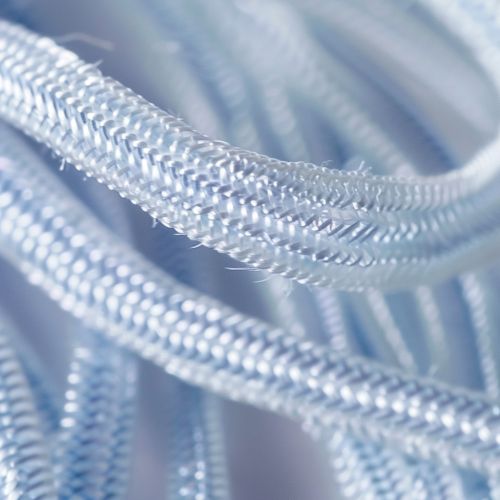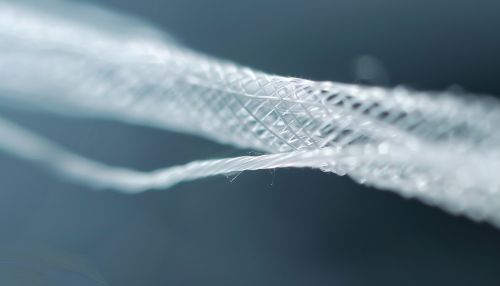Nylon sutures: Difference between revisions
No edit summary |
No edit summary |
||
| Line 3: | Line 3: | ||
The history of [[Surgical suture|surgical sutures]] dates back to ancient times, but the development of nylon sutures is a relatively recent phenomenon. The first synthetic suture material, nylon, was introduced in the 1930s by the DuPont company. The development of nylon sutures was a significant milestone in the field of [[Surgery|surgery]], as it offered a non-absorbable, sterile, and highly durable alternative to the natural materials like silk and catgut that were commonly used at the time. | The history of [[Surgical suture|surgical sutures]] dates back to ancient times, but the development of nylon sutures is a relatively recent phenomenon. The first synthetic suture material, nylon, was introduced in the 1930s by the DuPont company. The development of nylon sutures was a significant milestone in the field of [[Surgery|surgery]], as it offered a non-absorbable, sterile, and highly durable alternative to the natural materials like silk and catgut that were commonly used at the time. | ||
[[Image:Detail-77889.jpg|thumb|center|A close-up image of a nylon suture, showing its smooth, monofilament structure.]] | [[Image:Detail-77889.jpg|thumb|center|A close-up image of a nylon suture, showing its smooth, monofilament structure.|class=only_on_mobile]] | ||
[[Image:Detail-77890.jpg|thumb|center|A close-up image of a nylon suture, showing its smooth, monofilament structure.|class=only_on_desktop]] | |||
== Composition and Properties == | == Composition and Properties == | ||
Latest revision as of 06:34, 8 May 2024
History and Development
The history of surgical sutures dates back to ancient times, but the development of nylon sutures is a relatively recent phenomenon. The first synthetic suture material, nylon, was introduced in the 1930s by the DuPont company. The development of nylon sutures was a significant milestone in the field of surgery, as it offered a non-absorbable, sterile, and highly durable alternative to the natural materials like silk and catgut that were commonly used at the time.


Composition and Properties
Nylon sutures are made from long-chain synthetic polymers, composed of aliphatic polyamides. The molecular structure of nylon gives it high tensile strength, elasticity, and durability. These properties make nylon sutures ideal for use in various surgical procedures, including cardiovascular, ophthalmic, and neurological surgeries.
Nylon sutures are available in both monofilament and multifilament forms. Monofilament sutures are made from a single strand of nylon, while multifilament sutures consist of several strands twisted or braided together. Monofilament sutures are generally preferred due to their lower risk of infection, as bacteria cannot easily penetrate the single, smooth strand. However, multifilament sutures may be used when greater flexibility and knot security are required.
Uses and Applications
Nylon sutures are used in a wide range of surgical procedures. Due to their high tensile strength and non-absorbable nature, they are often used in procedures that require long-term wound support. They are particularly useful in cardiovascular and ophthalmic surgeries, where their non-reactive nature and smooth passage through tissues are beneficial.
In addition to their use in surgery, nylon sutures are also commonly used in dental procedures. They are used to secure dental implants, close surgical incisions, and support healing tissues.
Advantages and Disadvantages
Nylon sutures offer several advantages over other types of sutures. They are non-absorbable, meaning they do not degrade or lose strength over time. This makes them ideal for procedures that require long-term wound support. They are also highly resistant to infection, as their smooth surface does not provide a suitable environment for bacterial growth.
However, nylon sutures also have some disadvantages. They can be more difficult to handle and tie than other types of sutures, particularly in the case of monofilament sutures. They also have a tendency to cause a foreign body reaction, which can lead to inflammation and discomfort. Despite these drawbacks, the benefits of nylon sutures often outweigh the disadvantages in many surgical applications.
Future Developments
The field of surgical sutures is constantly evolving, with ongoing research aimed at improving the properties and performance of sutures. Future developments in nylon sutures may include the incorporation of antimicrobial agents to further reduce the risk of infection, or the development of bioactive sutures that can promote wound healing.
